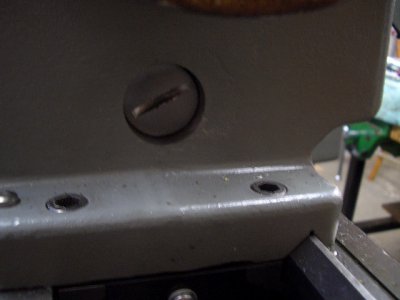- Joined
- Dec 25, 2011
- Messages
- 10,511
Rick,
1. It wouldn't explain the speed in Step 2 (or 3, whichever you actually meant) but what RPM are you running the motor at and are you using the original motor pulley or at least one with the exact same PD?
3 I think that's common.
4 Do you mean with the spindle not turning and with the pulley spinning on the spindle?
5 Assuming that I am right in assuming that both bearings are Timken, two possibilities are Cup loose in headstock or cone loose on spindle.
6 & 9 Did you apply the recommended grease to the gears? If the manual gives no clue as to mesh, use a strip of 20# bond between each pair of gears to set clearance.
7 & 8 No idea.
1. It wouldn't explain the speed in Step 2 (or 3, whichever you actually meant) but what RPM are you running the motor at and are you using the original motor pulley or at least one with the exact same PD?
3 I think that's common.
4 Do you mean with the spindle not turning and with the pulley spinning on the spindle?
5 Assuming that I am right in assuming that both bearings are Timken, two possibilities are Cup loose in headstock or cone loose on spindle.
6 & 9 Did you apply the recommended grease to the gears? If the manual gives no clue as to mesh, use a strip of 20# bond between each pair of gears to set clearance.
7 & 8 No idea.


